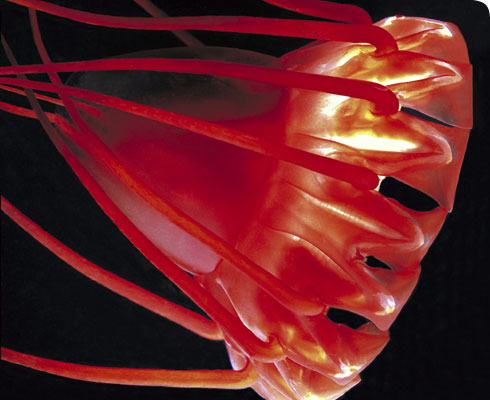Biology

Drawing of Periphylla periphylla produced in 1902 by Edward Adrian Wilson (1872 -1912). Wilson was the zoologist and junior surgeon on the 1901 -1904 Discovery Expedition to the Antarctic, under Commander Robert Falcon Scott (1868 -1912).
The swimming bell, or umbrella, of Periphylla periphylla can reach up to 35cm in height and 25cm in diameter.
The largest specimens are found in the Antarctic ocean. Elsewhere the jellyfish are often much smaller.
Its colour ranges from pale pink and orange to dark red.
Morphological features include:
- 12 tentacles
- 16 marginal lappets
- 8 gonads
- a large stomach
Lifecycle
Periphylla periphylla is one of the only jellyfish known not to go through an immobile (sessile) life-stage. It remains free-living and planktonic throughout the life-cycle.
Fertilised eggs develop directly into the jellyfish form (medusa).
There is some evidence for courtship behaviour in this species.
It has a long life-span for a jellyfish, and can live for up to 30 years.
